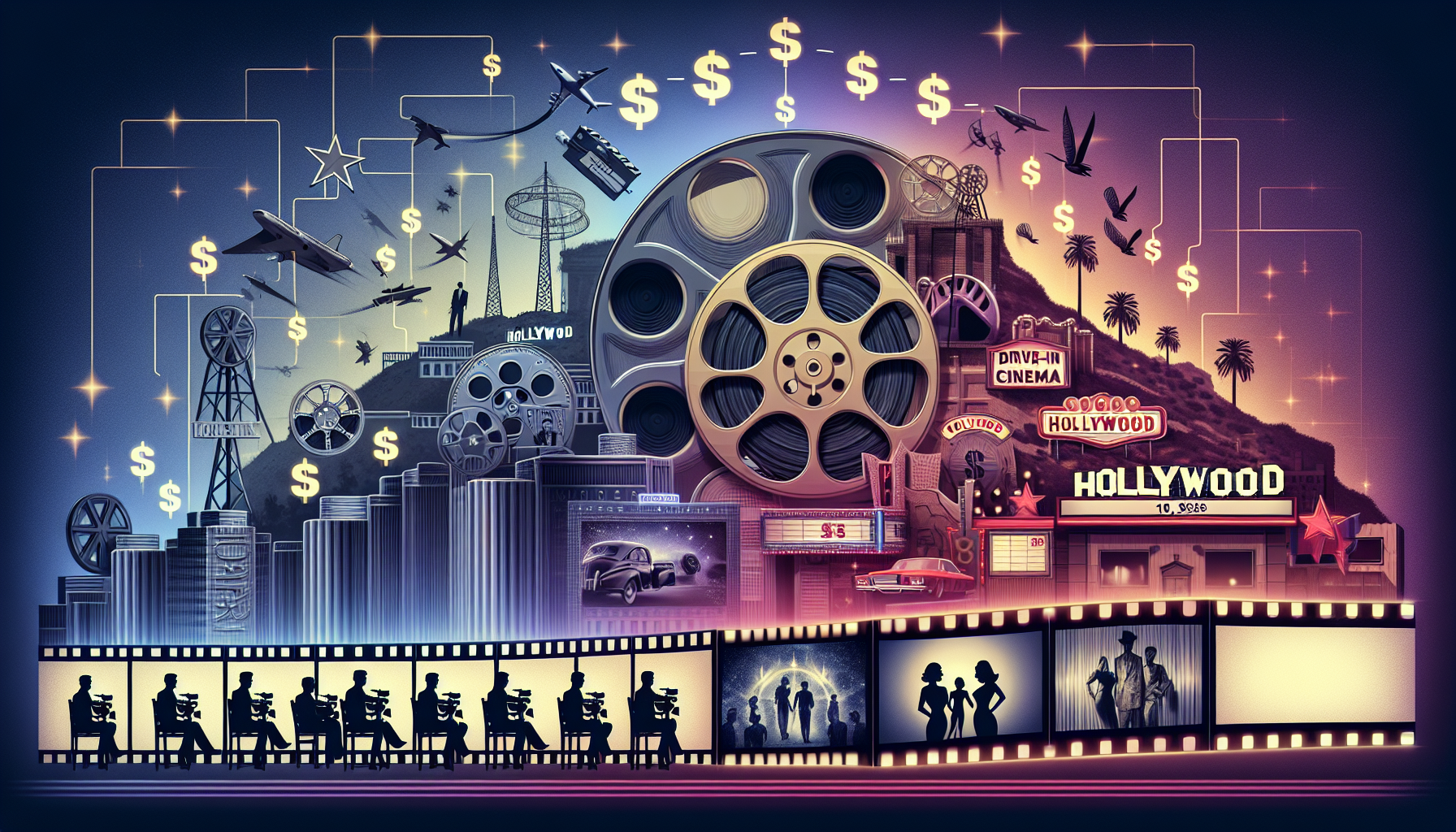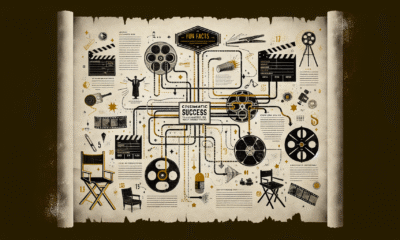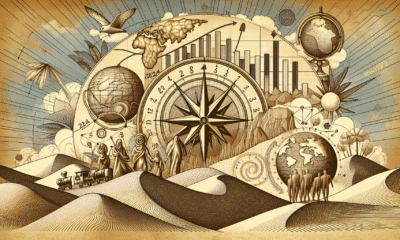Entertainment
The Evolution of Hollywood: A Financial Journey Through Decades of Cinema

Hollywood’s journey is not just a spectacle of glitz and glamour—it’s a fascinating financial saga that mirrors society’s transformations over the decades. The ups, downs, and everything in between encapsulate not only the artistry of filmmaking but also the sheer power of finances that drive the industry. If you’ve ever wondered how we went from black-and-white silent films to $300 million weekend openings, you’re in for a treat!
A Blast from the Past: The Silent Era
In the early 1900s, cinema was a fledgling art form. Silent films were the game-changers, enchanting audiences with their unique storytelling. However, let’s be real: these films were as cheap to produce as they were charming.
- Cost: A silent film cost about $10,000 to $20,000 to make.
- Profit: The returns were often around double the costs, which felt massive at the time.
Wondering how this compares to today’s standards? Check out our article on the evolution of film production budgets here.
While small by today’s standards, these profits kickstarted Hollywood’s financial engine, giving filmmakers the confidence to invest more money into bigger productions.
The Talkies Change Everything
Fast forward to 1927. The invention of synchronized sound, or "talkies," revolutionized the industry almost overnight. Now that audiences could hear dialogue, the stakes rose. Studios realized they could charge more than just a nickel for a ticket, and suddenly every dollar counted.
Box Office Boom
The late ’20s and ’30s saw the golden age of Hollywood, where the average studio budget grew significantly:
- Budget Increase: $20,000 for a simple talkie to over $1 million for a lavish film.
- Return: Some movies, like Gone with the Wind, grossed around $390 million (equivalent to over $3 billion today).
The combination of innovation, star power, and glamour transformed theaters into cash cows. Films were no longer just entertainment; they became significant cultural phenomena with blockbuster revenues.
The Post-War Era: The Rise of the Studios
The aftermath of World War II brought about new social dynamics, and Hollywood adapted accordingly. The 1950s and 1960s were characterized by the rise of the major studios as they began consolidating power.
Financial Strategies
- Expanded Audiences: Drive-ins and suburban theaters crop up, allowing studios to tap into a lucrative market.
- Marketing Innovations: Film trailers and merchandise started to appear, maximizing revenue.
Revenue skyrocketed, with some films like Ben-Hur and The Sound of Music earning millions, paving the way for what we now know as the “blockbuster era."
The ‘70s and ‘80s: Hollywood’s New Wave and the Birth of the Blockbuster
The 1970s marked a revolutionary period in Hollywood, as filmmakers began to take control. Directors like Steven Spielberg and Martin Scorsese utilized both artistic vision and commercial viability to craft enduring classics.
A Colossal Shift
- Blockbuster Films: Movies like Jaws (1975) and Star Wars (1977) redefined what it meant to be a financial success.
- Production Costs: The average film budget ballooned to over $10 million.
The success of Star Wars truly changed the game. With a staggering box office of over $775 million worldwide, and extensive merchandising, more than a few jaws dropped in industry boardrooms.
Curious about more blockbuster milestones? Visit our entertainment section for insight on iconic films!
The ‘90s and 2000s: The Digital Revolution
As the millennium approached, the film industry began going digital. With advancements in technology, CGI became commonplace, making special effects a significant part of storytelling.
Financial Landscape
- Budgets: The average film budget hit $50 million, as CGI-heavy films became more prevalent.
- Global Market: International box office receipts began to matter more than ever, often exceeding domestic sales.
Studios that adapted quickly flourished, while those clinging to traditional methods faced challenges. By the mid-2000s, box office earnings had reached unprecedented levels, with films like Titanic and Avatar grossing billions.
The Streaming Era and Beyond
And then came the game-changer: streaming. Platforms like Netflix, Hulu, and Disney+ started to turn the entire industry on its head.
Key Financial Impacts
- Production vs. Distribution: The rise of streaming challenged the box office-centric model. Studios are now focusing on producing content for streaming first.
- Budget Changes: High-profile streaming films have budgets that rival or surpass traditional blockbusters—think Netflix’s Red Notice with a budget of $200 million.
Data shows that traditional box office sales are declining as consumers shift to at-home viewing. However, industry experts predict that the future of film might not just be about the big screen anymore but rather on the platforms where viewers actually consume media.
Conclusion: Where to Next?
As we look to the future, Hollywood’s financial landscape is set for more transformations. Diversity in storytelling, global markets, and the impact of technology will likely shape what films look like in the coming years.
Will we see a new innovation that disrupts the current model again? Only time will tell, but one thing’s for sure: as long as there’s a story to tell, there’s money to be made in Tinseltown.
For more insights on the entertainment industry, check out our comprehensive articles on movie trends and cultural phenomena at NewsDayBreak.
To dive deeper into the impact of digital technology in the film industry, visit data sources like Pew Research for the most current statistics!
-

 News22 hours ago
News22 hours agoTeenage US Citizen Records Brutal Arrest by Immigration Agents Who Told Him, ‘You Have No Rights’
-
News21 hours ago
Maltese Police Officers Participate in Operation in the Black Sea
-

 Business22 hours ago
Business22 hours agoNavigating the Economic Landscape: Key Insights from Today’s Business Headlines
-

 News20 hours ago
News20 hours ago“Honoring Ukraine: A Tribute” (July 26, 2025) — dynamo.kiev.ua
-

 Entertainment22 hours ago
Entertainment22 hours agoCinematic Success: Fun Facts About Movies That Shaped the Film Industry
-

 Business19 hours ago
Business19 hours agoThe Top 10 Business Opportunities to Watch in 2025
-

 Business21 hours ago
Business21 hours agoNavigating the Shifting Sands: Key Global Economic Trends for 2024
-

 News19 hours ago
News19 hours agoEnviMin Showcases Vacaresti Natural Park to Her German Counterpart
